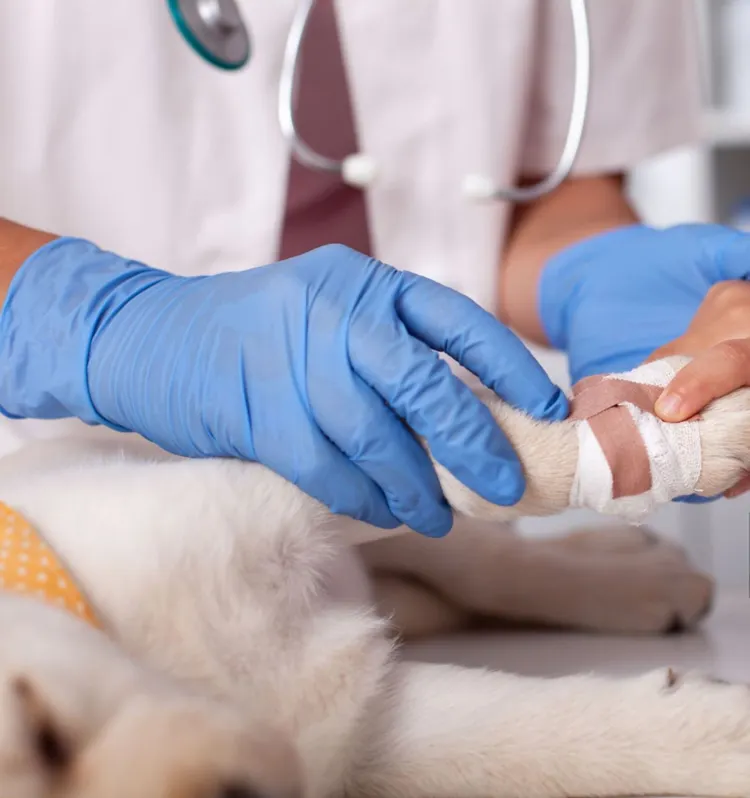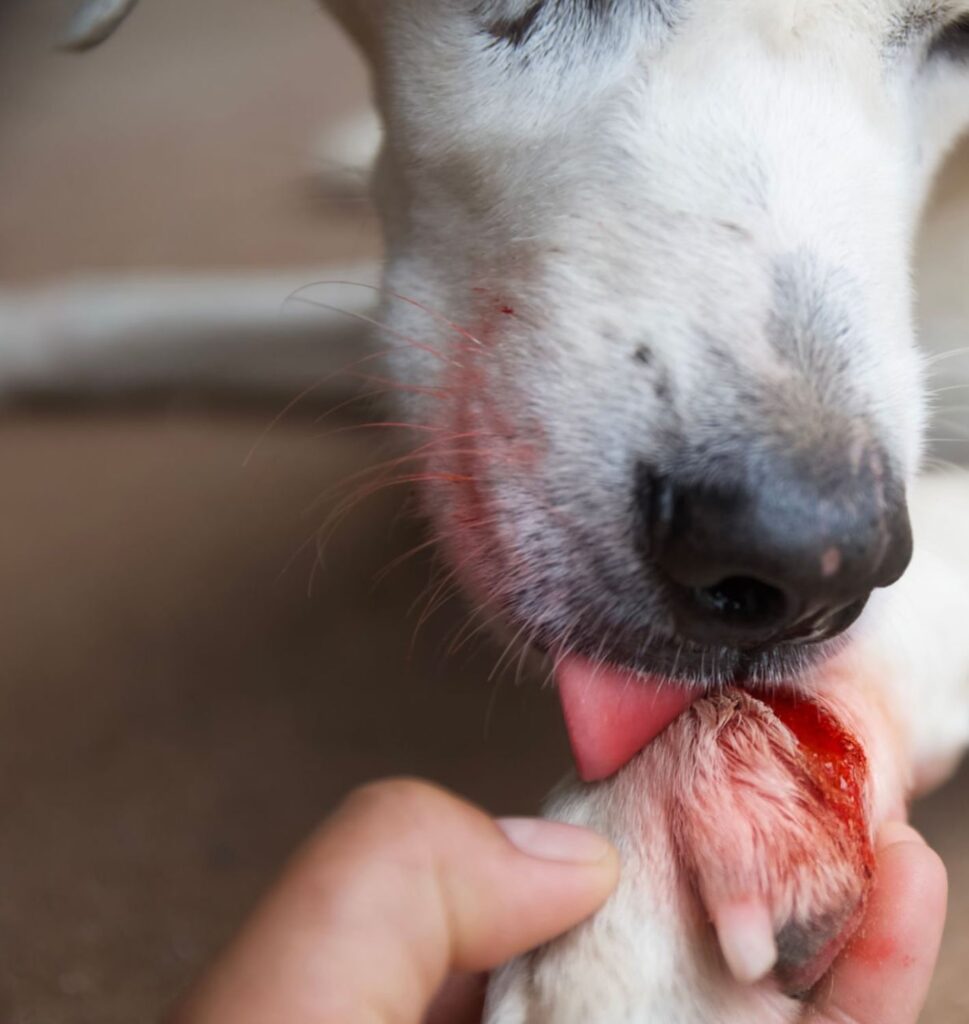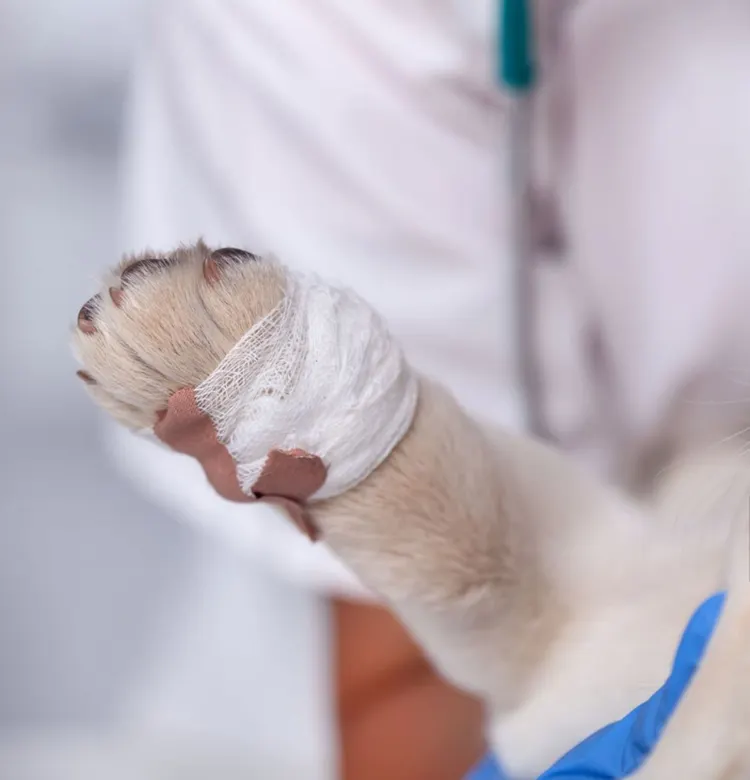Uh-oh, your dog’s paw is hurt! One minute they’re happily chasing squirrels, and the next, you notice a little blood—or maybe they start limping. It happens! Dogs use their paws for everything, so cuts and scrapes are bound to occur from time to time. Whether it’s from sharp rocks, broken glass, or even just a rough patch of ground, paw injuries can be a big concern for any dog owner. Don’t worry! In this guide, we’ll walk through the best ways to treat your dog’s cut paw, prevent infection, and even share some eco-friendly tips to help with the healing process.
First Things First: Assess the Situation
Before you panic, take a deep breath and assess how severe the cut is. A minor scratch or shallow cut usually won’t be a big deal, but deeper wounds might need medical attention.
- Check for debris: Look carefully at your dog’s paw to see if anything is stuck inside the wound, like glass, small stones, or thorns.
- Is it bleeding heavily?: If the cut is gushing blood or your dog won’t stop limping, you may need to go straight to the vet. For minor cuts, a home remedy might do the trick.
What to Do for Minor Cuts
For small, non-severe cuts, follow these steps to treat your dog at home.
- Clean the wound: Use warm water and a mild dog-safe soap to gently wash the paw and get rid of any dirt or debris. For added antiseptic, you can also use diluted betadine or hydrogen peroxide.
- Stop the bleeding: Apply gentle pressure to the wound using a clean cloth or bandage. If the bleeding doesn’t stop within 10-15 minutes, it’s time to consult your vet.
- Apply a pet-safe antiseptic: Once the wound is clean, you’ll want to disinfect it with a pet-friendly antiseptic, such as chlorhexidine or a natural alternative like diluted apple cider vinegar.
- Cover the wound: Use a dog-friendly bandage or wrap to keep the cut clean. Be sure not to wrap it too tightly, as you don’t want to restrict circulation. If your dog tends to chew at bandages, a protective bootie or sock can help protect the wound.
- Limit their activity: This can be tough, especially with high-energy dogs, but try to prevent your pup from running around on rough surfaces until the cut is fully healed.
- Keep the wound dry: Wet paws slow healing, so cover the paw with a boot or plastic wrap when your dog goes outside. Just don’t forget to take it off when they come back in!

When Should You Call the Vet?
Sometimes, home care isn’t enough. Here are signs that you need professional help:
- Excessive bleeding: If the bleeding doesn’t stop after 10-15 minutes of applying pressure.
- Deep or large cuts: If the cut is wide or deep, stitches might be necessary.
- Foreign objects: If you can’t remove debris like glass or sharp thorns yourself, let the vet handle it to avoid infection.
- Signs of infection: If the area becomes red, swollen, or starts oozing pus, there’s a chance an infection is setting in.
How to Prevent Paw Injuries in the Future
While paw injuries can’t be avoided 100%, here are some steps you can take to protect your dog’s paws:
- Use paw balm: Protect their paw pads by applying a paw balm or wax before walks. It can help prevent cuts from rough terrain and keep their paws moisturized.
- Boots for extreme conditions: Invest in doggy boots for rocky, icy, or super hot terrains. This will not only protect from cuts but also prevent burns or frostbite.
- Regular paw checks: Make a habit of checking your dog’s paws after walks. Keep nails trimmed and remove any dirt or debris that could cause problems.
Eco-Friendly Care for Paw Injuries
If you’re an eco-conscious pet owner, you’ll be happy to know that there are plenty of natural and sustainable ways to care for your dog’s paws.
- Natural antiseptics: Try using diluted apple cider vinegar or a solution made from manuka honey to clean wounds. Both have natural antibacterial properties.
- Compostable bandages: You can opt for biodegradable bandages, which reduce waste while providing protection for your dog’s paw.
- Homemade paw balms: You can make your own paw balm using coconut oil, beeswax, and shea butter—all of which are great for soothing and moisturizing dry or injured paws.
- Avoid plastic booties: If you need to cover your dog’s paws, choose recycled fabric boots instead of plastic alternatives.

What if My Dog Keeps Licking the Wound?
Dogs instinctively lick their wounds, but this can sometimes do more harm than good. Excessive licking can delay healing and even cause infections. If your dog can’t resist the urge, you might need to use a cone of shame (aka Elizabethan collar) or invest in anti-lick sprays made from natural ingredients. You can also distract them with chew toys or puzzle feeders to keep their mind off the injury.
Can You Use Human First-Aid Products on Dogs?
Not all human products are safe for dogs, so it’s important to use pet-friendly options. Avoid ointments like Neosporin, which may be harmful if ingested, and always double-check with your vet before applying any products. Instead, look for pet-specific antiseptics or natural remedies.
How Long Does it Take for a Paw Cut to Heal?
The healing time for a dog’s paw cut depends on the severity of the injury. Minor cuts usually heal within a week or so, while deeper wounds can take several weeks. Be patient, and remember that your dog’s paws take a lot of wear and tear, so it’s crucial to keep them protected during the healing process.



